Pfizer’s Organizational Structure
Organizational structure is a hierarchical arrangement of people and departments within a company (Druckman et al., 1997). It comprises board of directors, managers, subordinate staff and shareholders. Pfizer has re-structured its divisions into more specialized departments led by chief executives that report directly to Pfizer Chairmen and the Chief Executive Officer. The company is separated into two divisions large-molecule and small-molecule. Separated divisions have established management team and increased accountability, clear strategies, and better management on capital and cost (Triano et al., 2008).
The structure of the company is a framework because the company manufactures several products. Being the world’s largest pharmaceutical company, Pfizer deals with different pharmaceutical products company (Druckman et al., 1997). There are two distinct research organizations PharmaTherapeutics Research & Development Group and BioTherapeutics Research & Development Group, which include nine commercial operating businesses: Animal Health and Capsugel, Consumer Healthcare, Nutrition, Established Products, Emerging Markets, Specialty Care, Primary Care, and Oncology. Pfizer accelerates research and development of new medicine by including top academic public-sector and private-sector institutions. Separation of divisions ensures stronger management team, increased accountability, clear strategies and a better way to manage capital and cost.
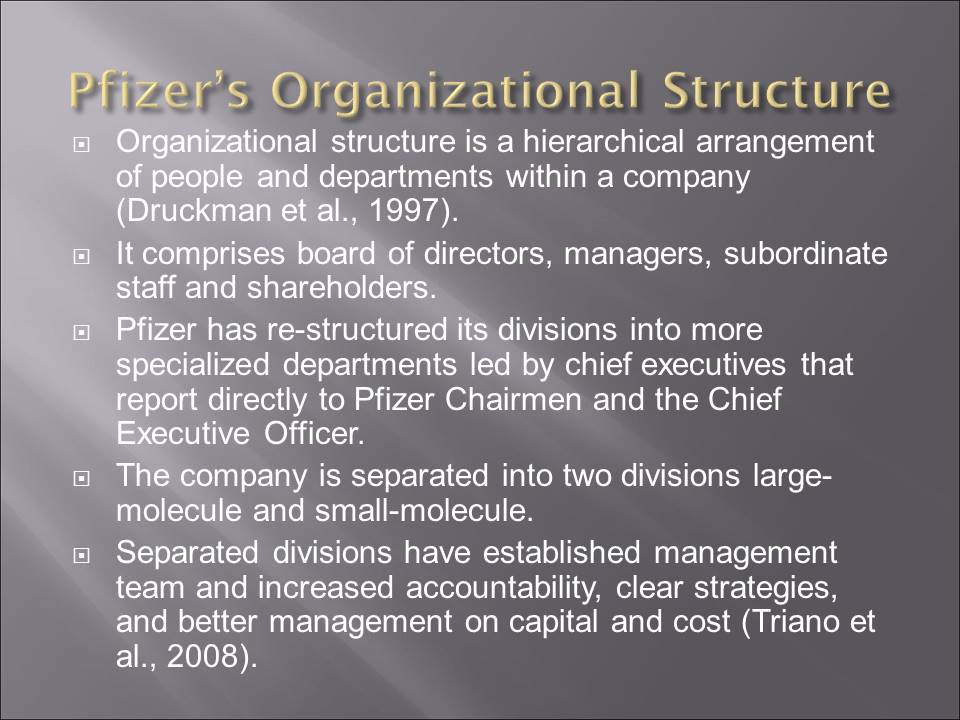
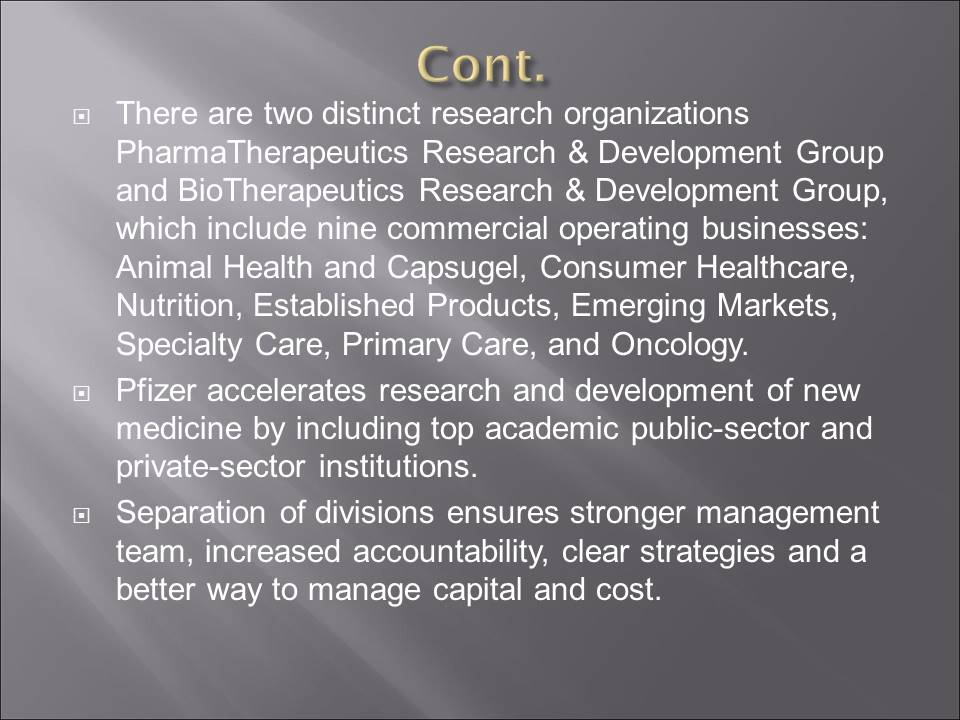
Financial management
- Sales/revenues for Pfizer increased by 39% in 2011 from 2007.
- Cash revenues is generated from the sale of company’s products.
- Utilizing Fund transfer is a pricing mechanism which maintains high stock prices.
- The company’s major expansion strategies are based on long-term debts.
- Pfizer’s opportunity for quick expansion is based on their many financial instruments.
- The stock prices for Pfizer Inc. in 2007 ranged from a low of $22.56 and a high of $23.79. In 2011, the lowest price was $17.62 and the highest was $18.38. 2012 has been promising for Pfizer as their stock price has risen to $26.83 at its highest point (“Analysis tools –”,2012).
- The company uses both the debt instruments and the equity debts to address its financial needs and enhance the efficiency of its operations.
- Pfizer’s borrowing ability is focused on generating revenue for its research operations.
- The solution to the possible challenges facing its pricing strategy is to focus on enhancing the level of efficiency and cost effectiveness.
- Pfizer has statistical data which allows any solutions dealing with financials to be accurately tracked.
- Pfizer shares have returned 21.8 percent over the past 12 months with 3.6 percent dividend yield.
The idea on borrowing presents financial constraints to the company’s demand to expand its operations and infrastructure development. The company does not have a huge borrowing capacity due to previous loans.
These yearly balance sheets will be the validation for effectiveness. Moreover, all the large corporations have individual departments that evaluate its effectiveness in all its categories. For example, there will be a department to strictly evaluate its current fixed and liquid assets. This department will advise its executive teams to increase or decrease specific categories that will make the company more profitable. Ultimately, all the companies are in business to make money.

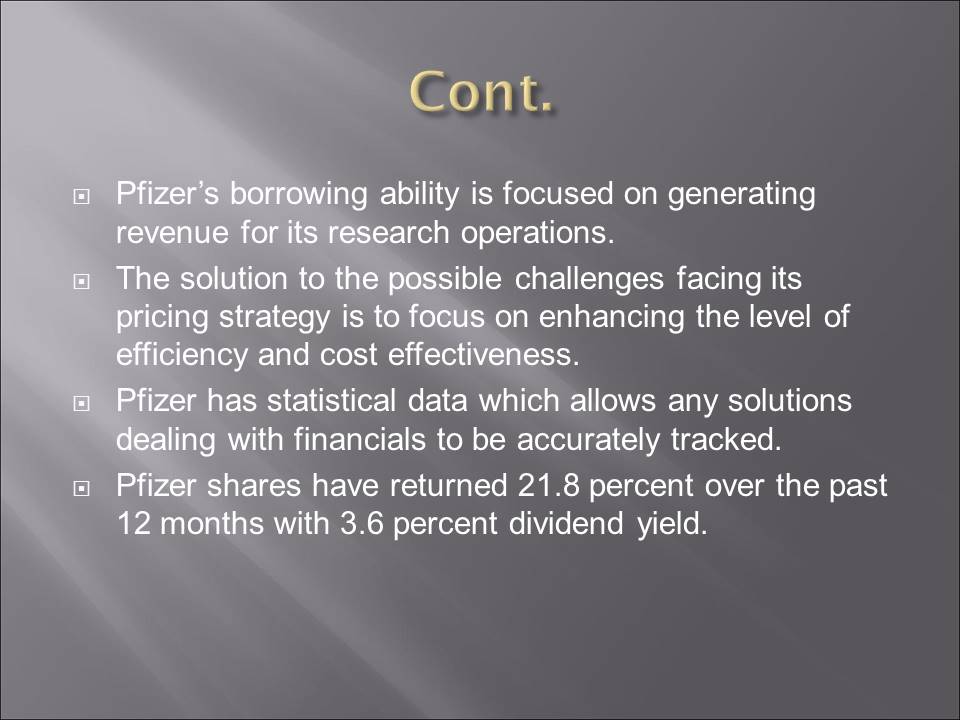
Improvement
- Changes in its current operational strategies include increase in fixed assets, decrease its debt level, increase product line revenues, and manage pricing structures.
- Capitalization on its current emerging markets results in increase in the overall sales.
- The company ventures into new Research and Development drugs with patent control.
- The management of its expenses is done effectively.
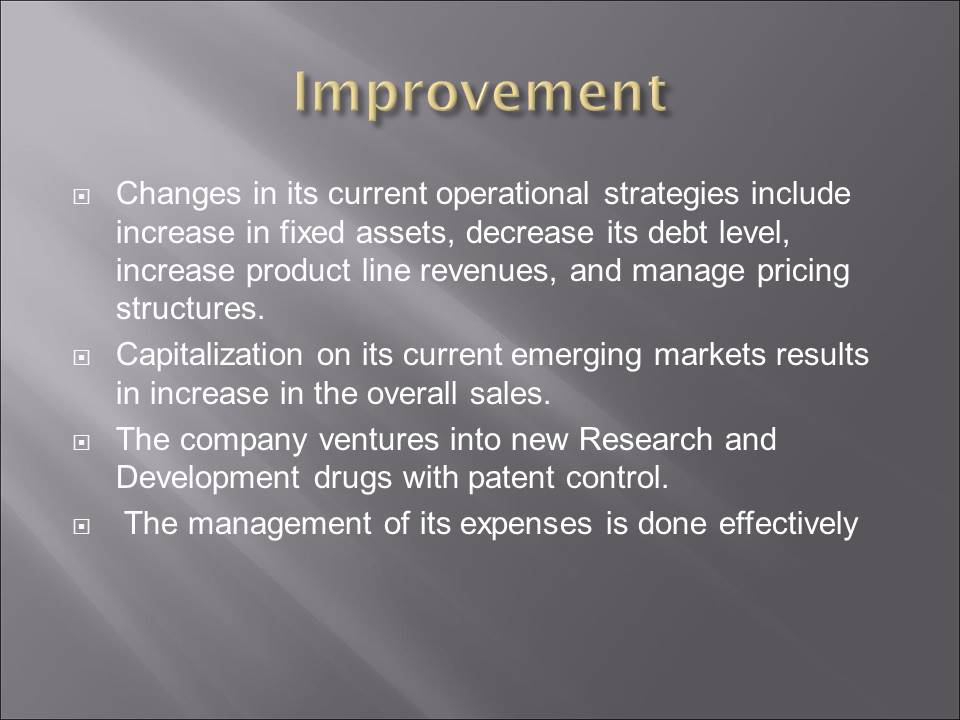
Learning Points
- Pfizer’s financial stability is dependent on its ability to be proactive and reactive to current issues.
- Reaction to real-time conditions and application of right metrics.
- Learning from SAP ERP (enterprise resource planning) which contains programs used for evaluating business.
- Learning from alliances.
The firm can accurately forecast and optimize demand response in order to plan in advance. This will help solve any issues that arise out of the firm’s operations.
Specifically, there are 3 programs that can directly increase Pfizer’s operational efficiencies. Customer Relationship Management (CRM) helps Pfizer identify and retain customers, and gain marketing and customer insight. Product Lifecycle Management (PLM) helps Pfizer manage products through its entire lifecycle from conception to delivery. Supply Chain Management (SCM) helps Pfizer manage its supply chain business from raw material to finished goods.
Pfizer cannot operate without alliances. They have integrated some type of strategic alliances into their discovery, development, manufacturing, and distribution networks.
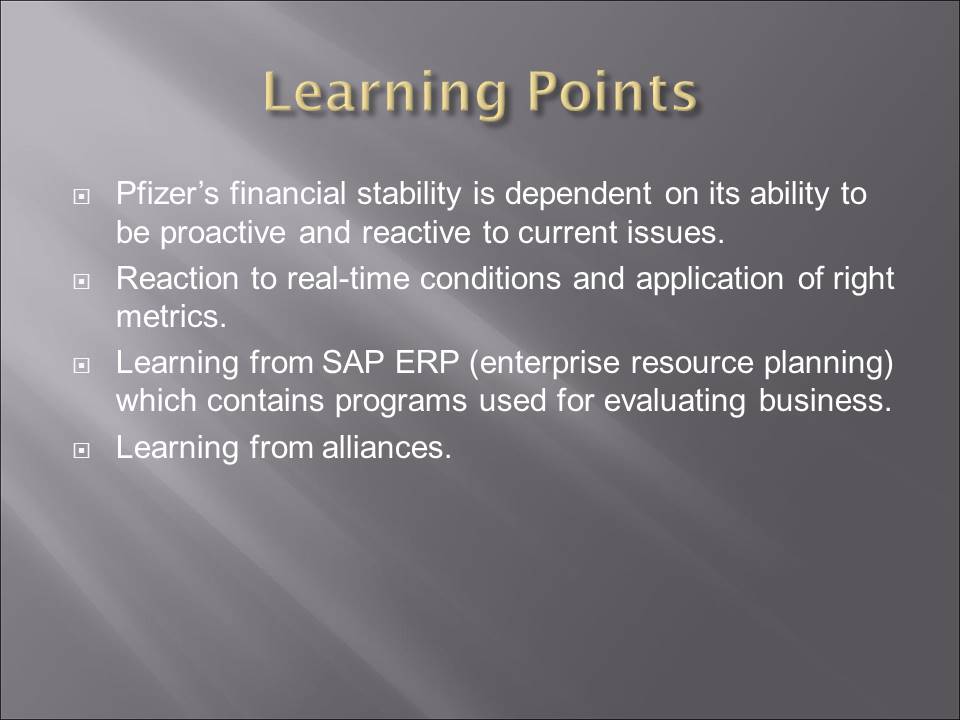
Opportunities for Improvement
- Obtaining more fixed assets that would help generate income (MacKay & McKiernan 2004)
- Opportunity for improvement suggests the company should pursue markets in underdeveloped states across the globe.
- Minimize short-term debts and instead utilize long-term debts such as government and corporate bonds.
- Further investment in technology for production sustainability
- Introduction of a micro auditing unit for internal decision making.
- Implementation of Situational Leadership II (SLII) to all managers.
- Development of more specialized training programs.
Long term debts have a long maturity period with low interest rates. Hence, borrowing should be restricted to acquiring finances aimed at expanding company operations. Borrowing should also be restricted to improve the state of infrastructure and enhancing the level of manufacturing and cost effectiveness in Pfizer’s business operations.
Presently, the company depends mostly on the macro market environment. The decisions made should depend on available resources, such as investment portfolio, infrastructure, personnel size, experience and efficiency for a specialized high skill assignment requiring specific qualifications. These results provide an in-depth estimation of distribution of probability for future expected returns (MacKay & McKiernan 2004)
Situational Leadership II provides an effective way to manage and develop people, time, and resources. It is built on open communication and developing self-reliance. This increases frequency and quality of conversations between managers and employees, which improves performance and development. SLII develops its employee competence, which in turns increases commitment, which develops into employee retention.
As it upgrades its current IT operations, employees are to be trained. Unless training is effective, there will be no benefits and the company will lose money. Technology and medicine should go hand in hand.
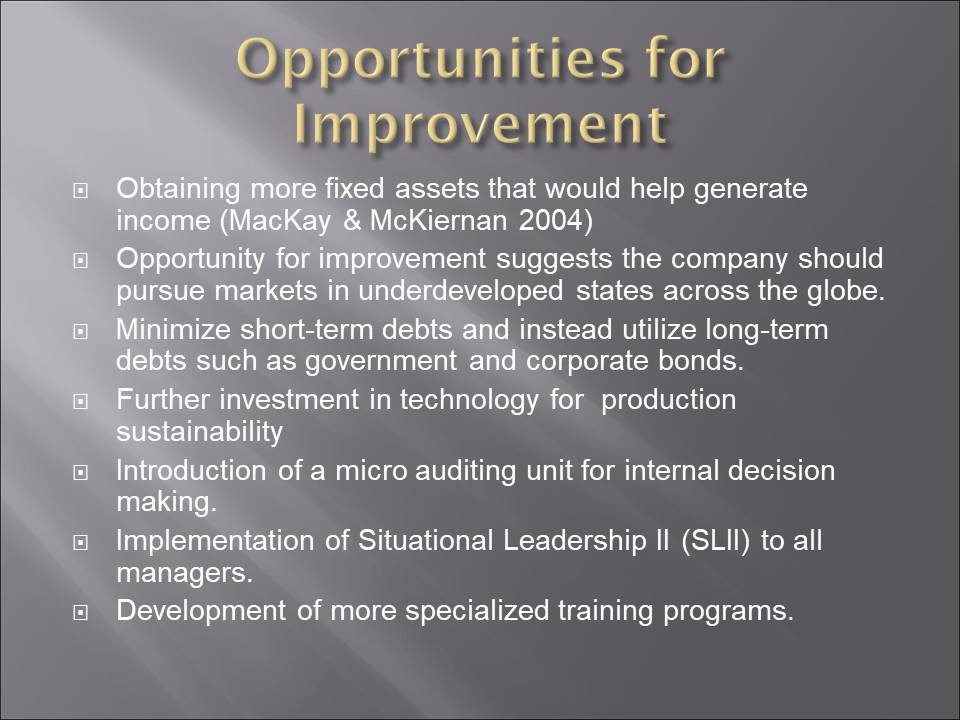
References
Druckman, D., Singer, J. E., Van, C. H. P., & National Research Council (U.S.). (1997). Enhancing organizational performance. Washington, D.C: National Academy Press.
MacKay, R. B., & McKiernan, P. (2004). The role of hindsight in foresight: refining strategic reasoning. Futures, 36(2), 161-179.
Triano, C., Kindler, J., D’Amelio, F., Read, I., Mackay, M., & Schulman, A. (2008). PFE – Q3 2008 Pfizer Earnings Conference Call. Web.